The most honest art gallery in the world.
FAQs
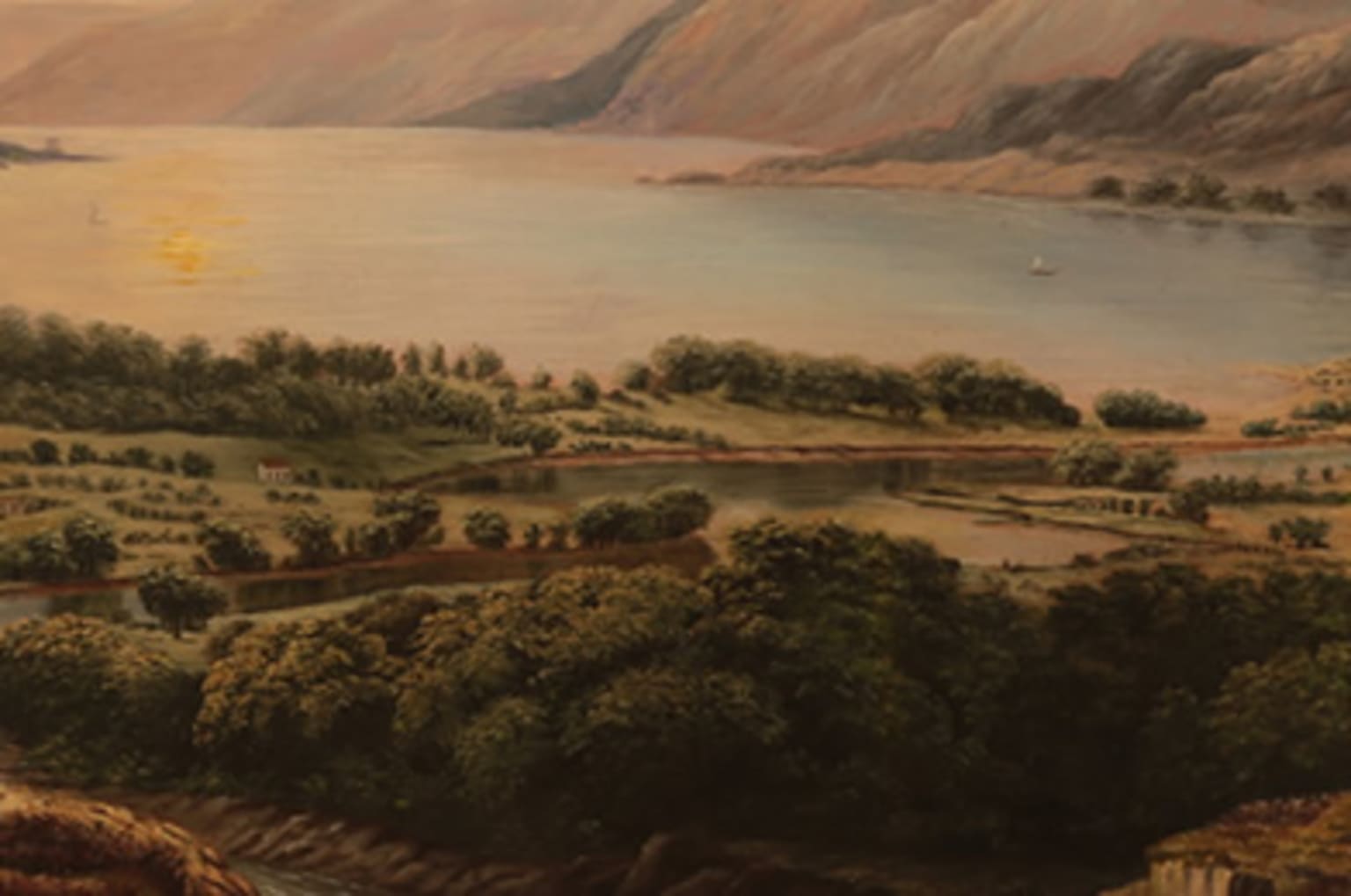
Where is your gallery located?
Bedford Fine Art Gallery is located at 230 South Juliana Street in historic Bedford, a small, but vibrant town in south-central Pennsylvania. Bedford is conveniently located midway between Harrisburg and Pittsburgh, off Exit 146 of the Pennsylvania Turnpike. Easy to find, it is housed within the Bedford Mansion, in Bedford’s historic district. It is listed on the Register of Historic Places, the perfect venue for you to view important 19th century art.
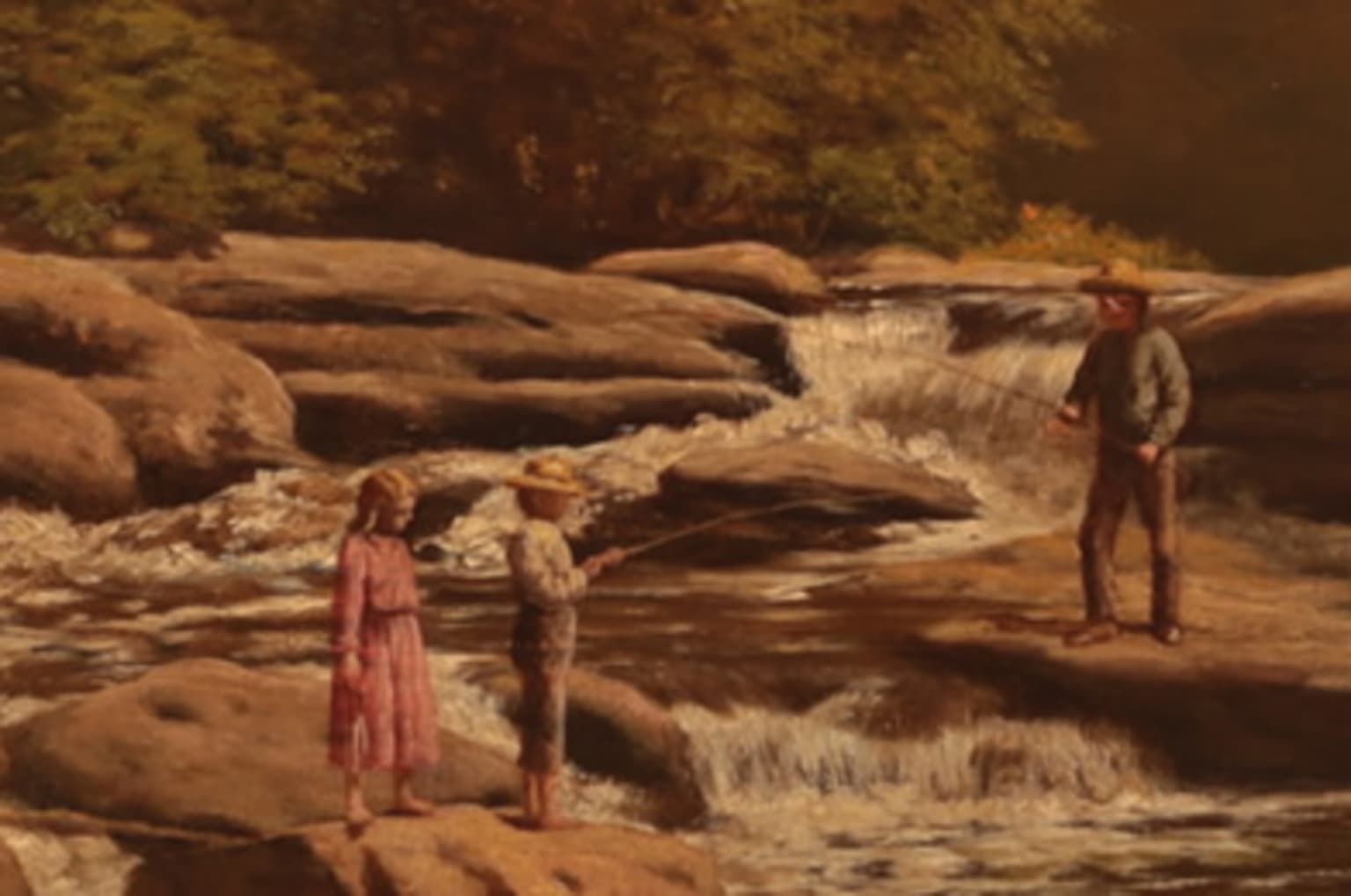
How long have you been in business?
We have been passionate collectors of fine art for over 30 years, developing relationships with art galleries, museums, auctioneer houses, conservators and knowledgeable collectors. We decided to open our gallery about 10 years ago. We offer only the finest 19th century carefully selected artworks by well-listed artists.
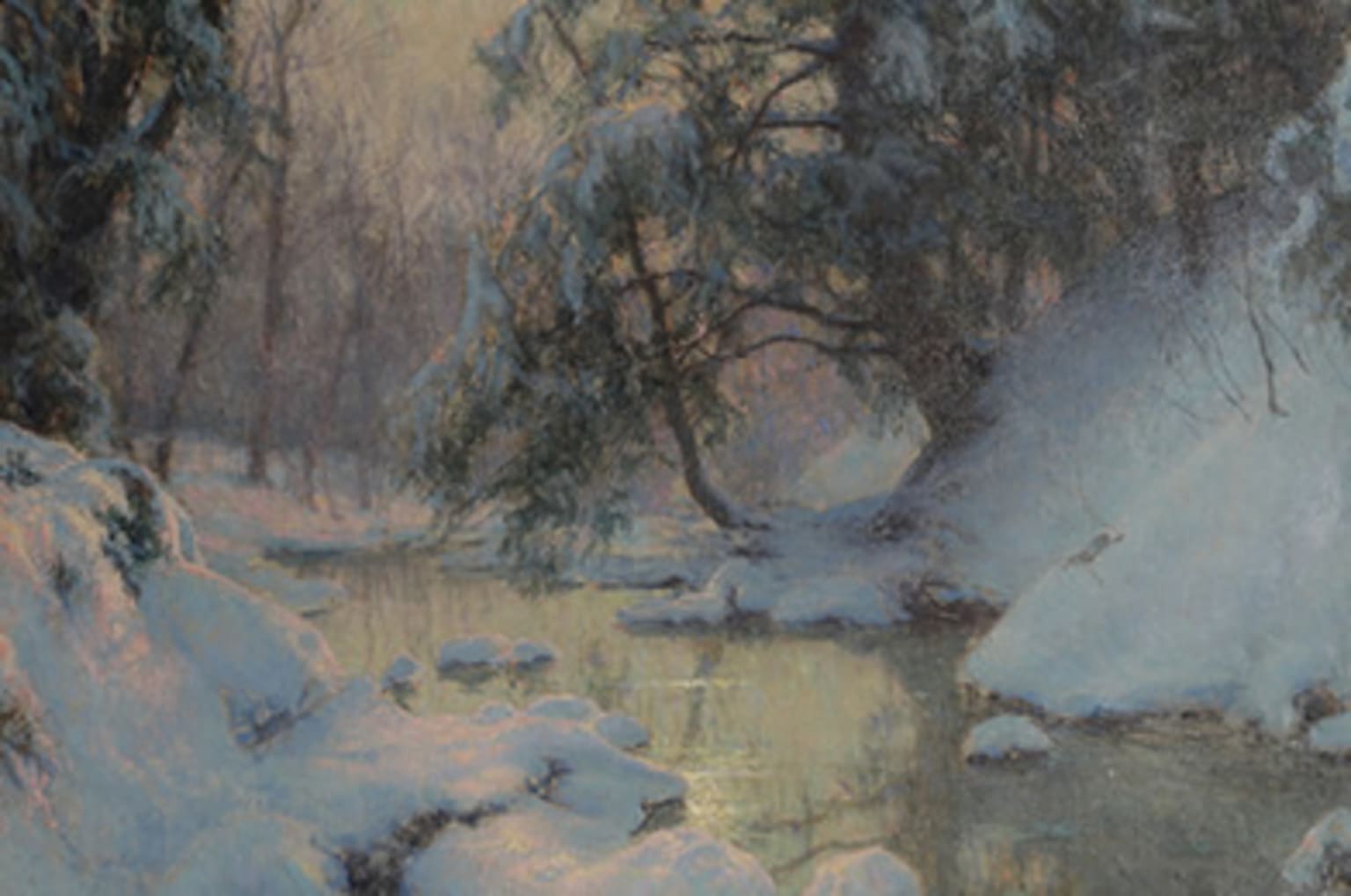
What is your experience in fine art?
We have been passionate collectors of fine 19th century art for over 25 years, developing relationships with art galleries, museums, auctioneer houses, conservators and knowledgeable collectors. As collectors ourselves, we do our due diligence in researching each artist and examples of their work. Some of our paintings have been requested for museum art exhibitions and some have appeared in magazines and books. We are on the board of Southern Alleghenies Museum of Art and guide the selection of new art acquisitions.
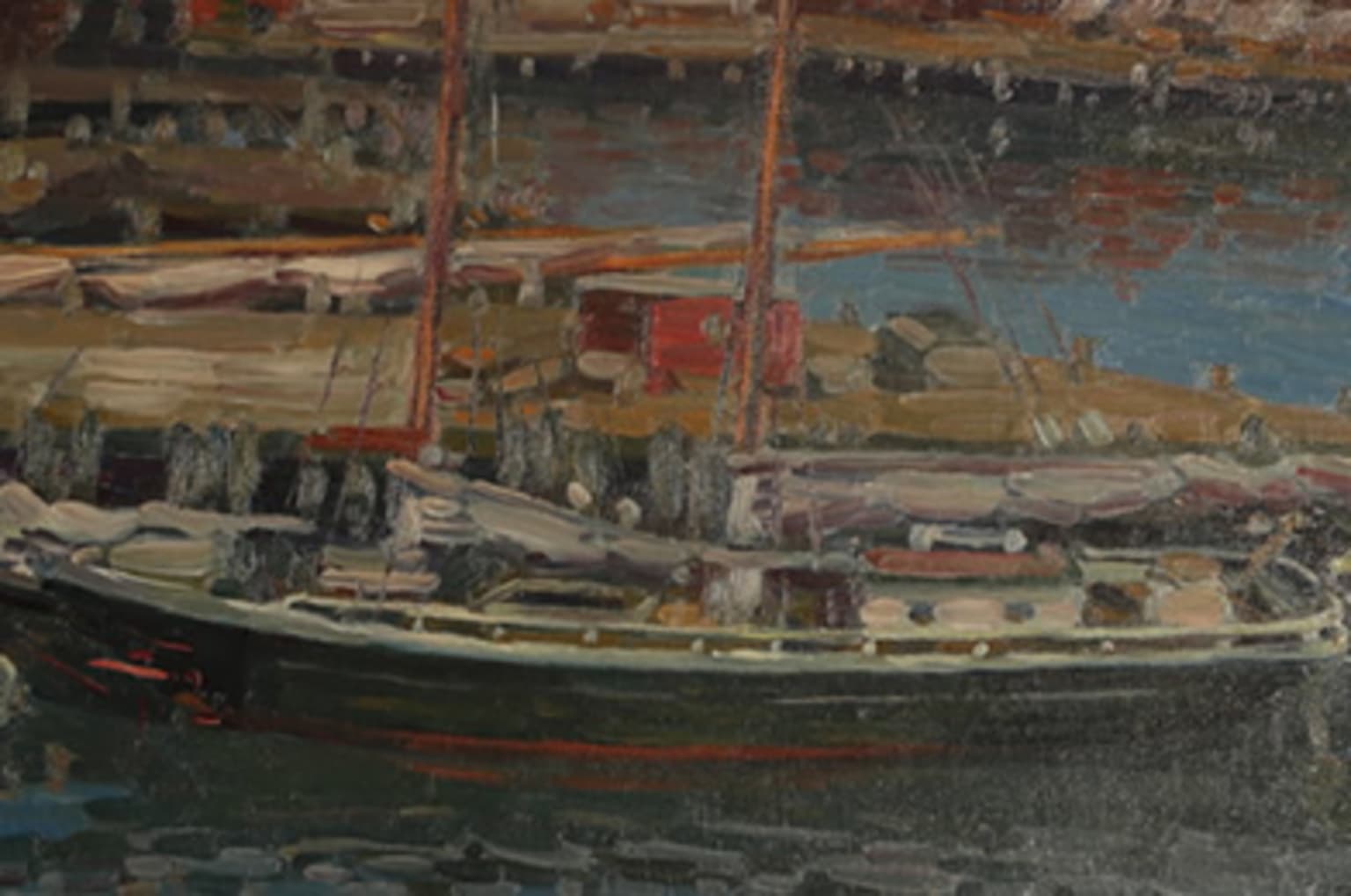
I am not familiar with fine art, how can you help me?
Since you intuitively know what you like (although you may not realize it), we start there. You will likely be drawn to a specific type of painting (e.g., landscape, marine, still-life, genre, American historic/political, sporting art, or animal theme). You do not need to visit in person (but it is recommended). We have a user-friendly website that allows you to view each of our paintings, complete with a biography of the artist. With our zoom and super-zoom feature, you can “put your nose right on the painting”. We also have blog posts on our website that provide you with an introduction to art, plus we welcome your phone calls and emails to answer questions about 19th century art and our artists. Our diverse inventory boasts some of the best examples of 19th century artists. Our paintings are carefully selected so that we are able offer you the highest level of quality. We believe we are safeguarding you, our customers, purchase by providing the best quality works available. If you decide to visit us in person, we can offer you “concierge-style service”—taking time to introduce to us, our gallery and our paintings, a “grand tour” so to speak.
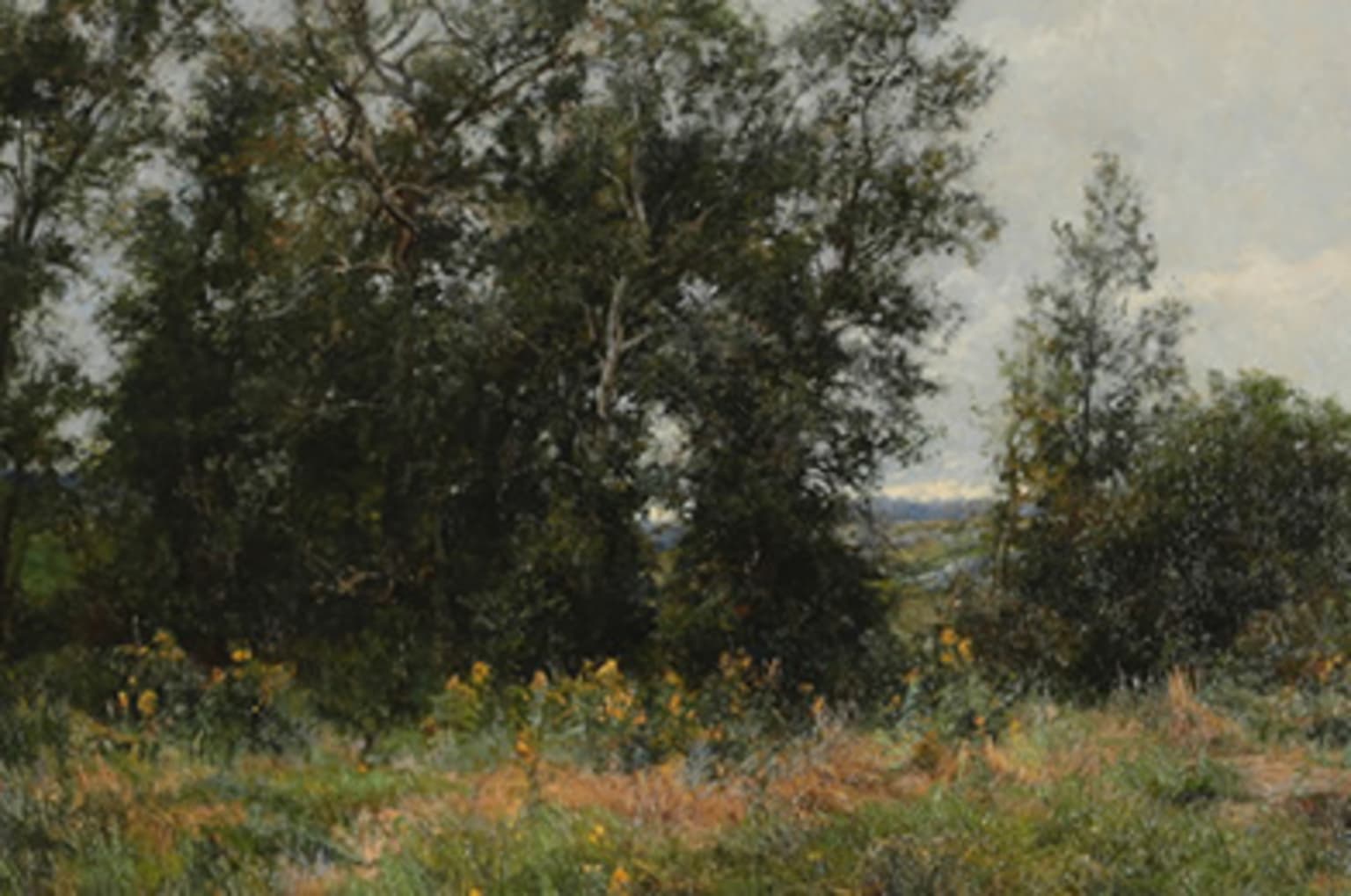
Where do you find your paintings?
We are not looking for just any 19th century paintings but the best quality works available. We are on a continual quest to find quintessential works representative of 19th century artists. We spend two to three hours every single evening in our search to find the best quality paintings. Paintings don’t just come to us--although sometimes they do! People have found our website and contact us regarding artwork they would like to sell. If we are interested and it meets our standards, we may purchase it. Auction houses are another source; however, we are very selective in which ones we deal with and we perform up front “due-diligence” to ensure that the painting offered is not misrepresented. Sometimes an institution goes through deaccession, which also provides opportunities to purchase fine art. We extensively research every painting and only the absolute best paintings meet our standards.

Does your gallery have paintings only by local artists?
No. We do offer a selection of paintings by 19th century Scalp Level School artists, a group of Pittsburgh artists who painted at Scalp Level, Paint Creek and Shade Creek about 30 miles from our gallery. We also have paintings by artists who painted at many of the popular 19th century art colonies in the United States, France and Great Britain. Other selections include fine examples of British and French 19th century academic art. We love 19th century fine art, but quality exists regardless of who did the painting or in what century it was painted. The value of a painting depends not only on who painted it, but in how characteristic the particular painting is representative of the artist’s work, and the period in the artist's career in which it was painted. Just like our 19th century works for sale, we are happy to represent some very talented contemporary artists (some of them local to our gallery) at the pinnacle of their careers. Contemporary works for sale at Bedford Fine Art Gallery include fine art from artists such as: Allen Blagden, Guy Coheleach, Peter S. Corbin, Lisa Geiger, James C. Groves, Anthony "Tony" Henneberg, Wayne Hyde, Michael Mosorjak, Joan Mudge, Bill Rice, John Paul Strain, Michael Strueber, Marlene Wiedenbaum, and Scott Zuckerman.
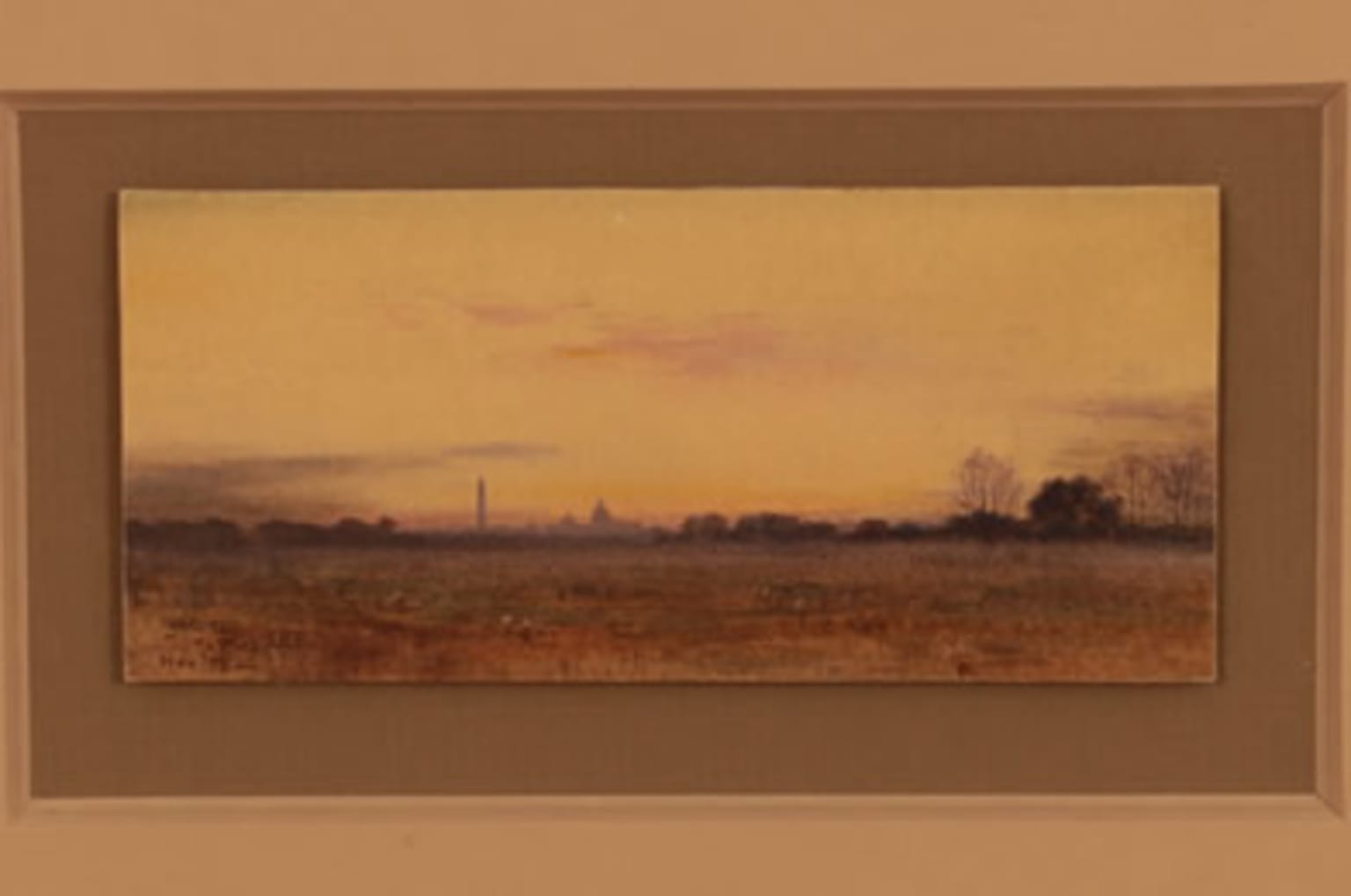
Do you sell prints?
No. Bedford Fine Art Gallery sells only original 19th to early 20th century paintings, unlike most present day galleries that offer mostly modern art and decorative prints. It is our belief that nothing captures the essence better than the original, whose hand the artist has personally touched. The talent of our artists is intuitively obvious to even the most casual observer.

Do you sell only oil paintings?
No. We also have a selection of fine original pastel, gouache, pen and ink, and water color paintings.
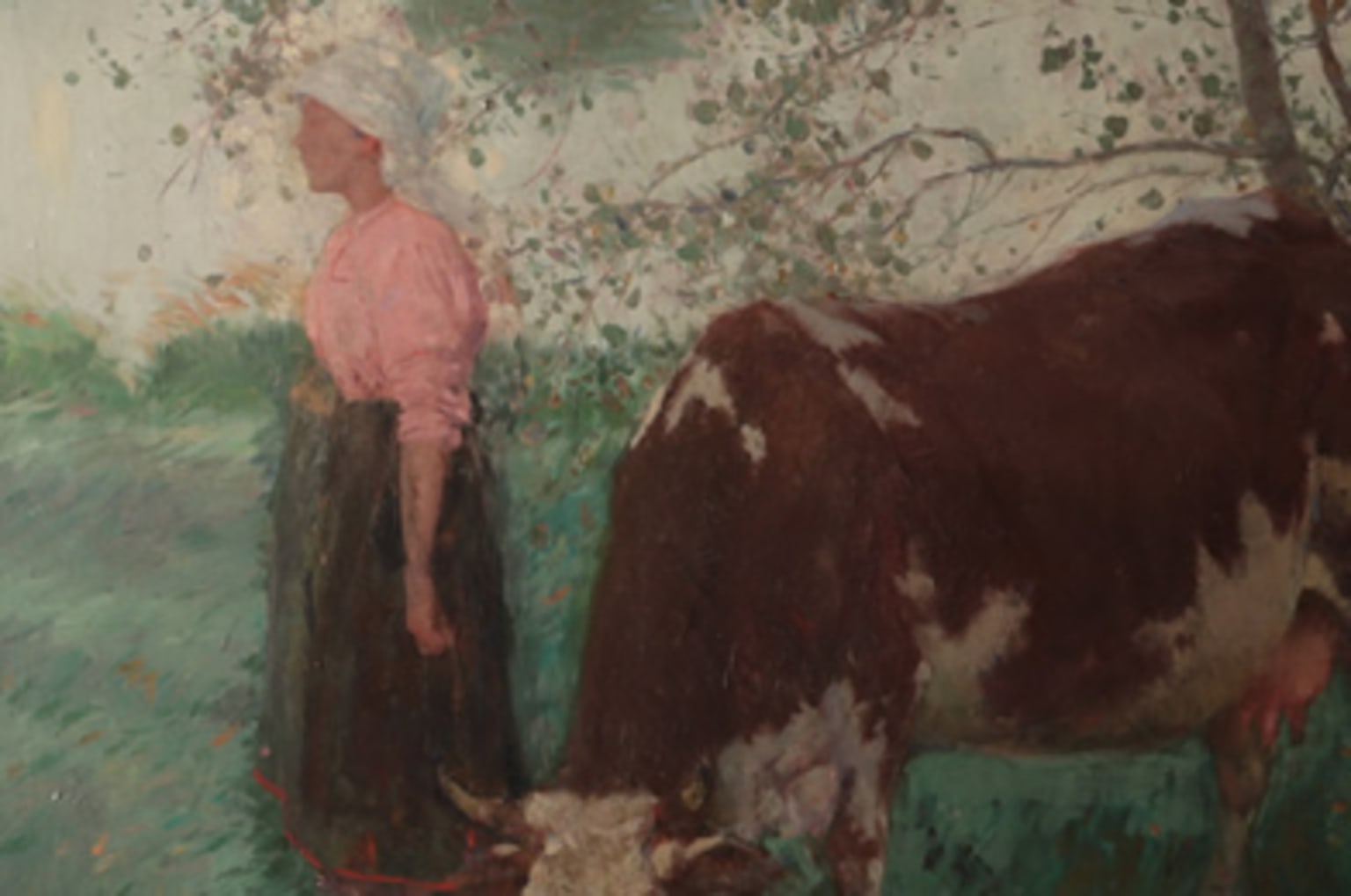
What is the age of a painting?
With few exceptions, the paintings offered by Bedford Fine Art Gallery were painted between circa 1860s through the 1920s. Unless the artist added the date when he or she painted it, it is difficult to state unequivocally when a particular piece was painted by an artist. There are some clues that we use to bracket the timeframe a bit. Most artists begin their career with one style or genre and as they mature and widen their spheres of artistic influence, settle into a particular subject for which they become well-known.
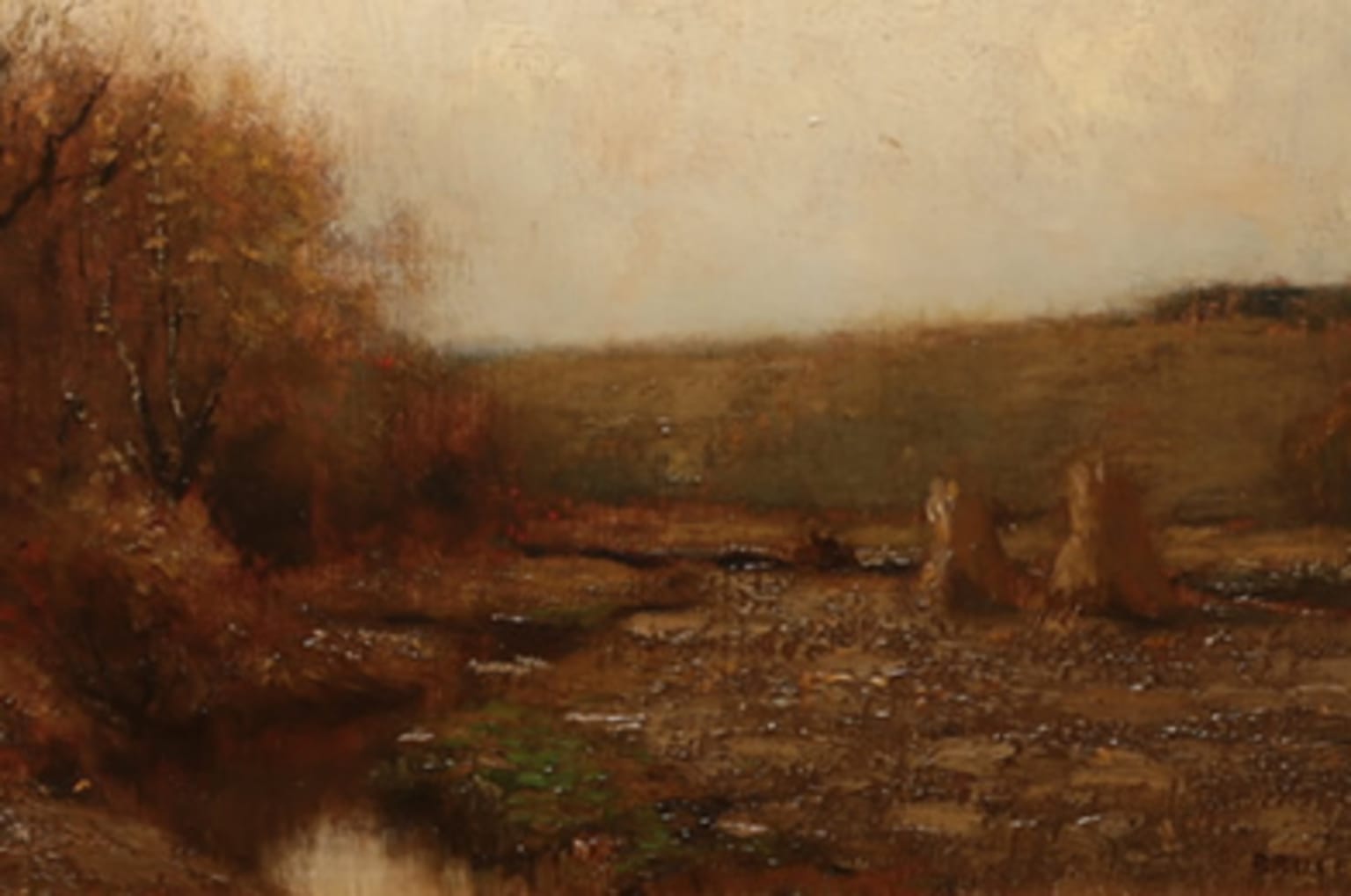
Who is the artist that painted it?
The paintings we sell are signed so that the artist who painted them is not in doubt. Most of our artwork is American, but we also have works by British and French academic artists, as well. Another important item related to “who” is--why is this artist important? Was he or she a founder of an art school, the leader of an art movement, did he accompany the important government and railroad surveys of the 1800s, or did they fight in the Civil War—which side? We have paintings by many artists who not only led interesting lives, but were also influential figures in the world of 19th century art. The “who” also tells you something about the “what”—the subject that is usually associated with that artist. If the painting you are looking at is a still-life, but the signature is of an artist that is better known for landscapes, then it is likely that you are looking at either an earlier or later work by this artist. Often the artist can be identified merely by looking at the subject and composition, which by itself can be a “signature”.
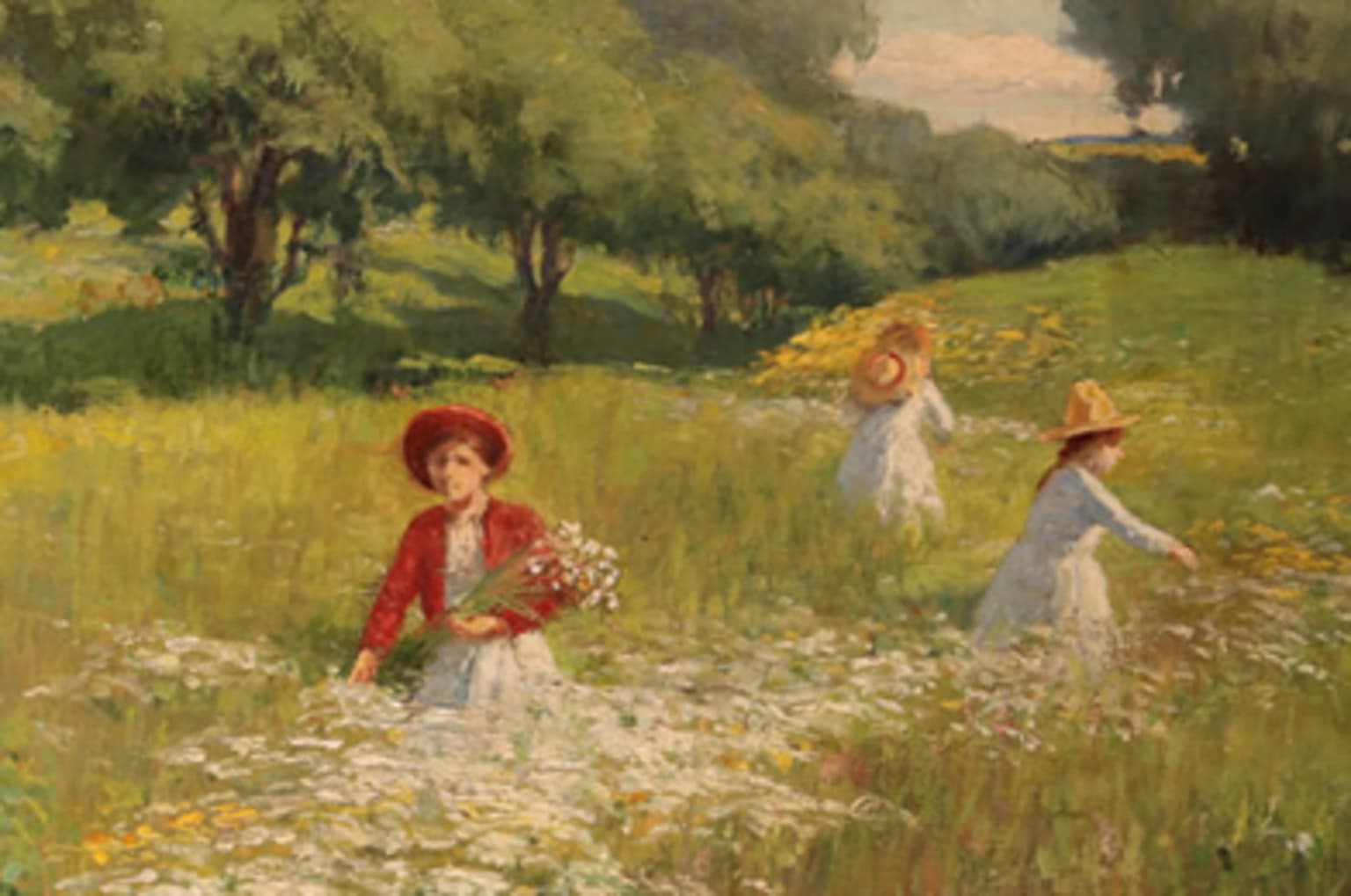
Does each painting have a known history?
The known history or “provenance” of a painting is often unknown regarding the identity of the original owner or subsequent owners, prior to its arrival at our gallery. We do, however, have some paintings that we purchased from descendants of the original owner, who had bought them directly from the artist. The artists carried by Bedford Fine Art Gallery exhibited their paintings and sometimes an exhibition catalog is discovered that mentions the painting and the year it was exhibited. Other paintings have as their only documentation historic auction house records. Our research sometimes provides clues regarding where and at what point in their career it was painted, and possibly former owners. Buying a painting from Bedford Fine Art Gallery ensures that you are getting an original painting from a well-recognized artist.
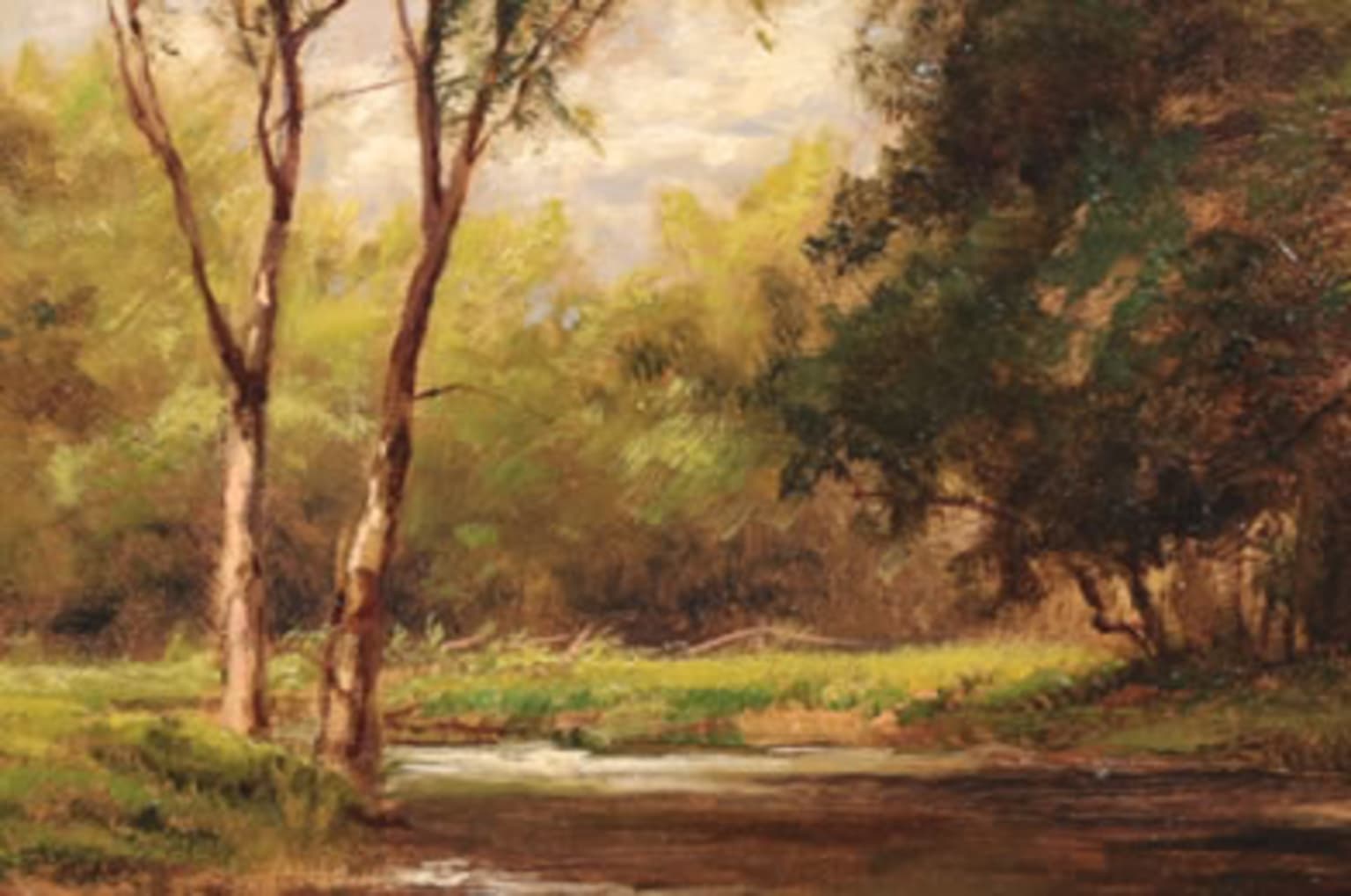
Do I need to visit your gallery to purchase a painting?
No. Bedford Fine Art Gallery has sold paintings all over the United States, for example, without the buyers stepping foot in our gallery. We have a user-friendly website that allows you to look at each of our paintings, with zoom and super-zoom, so that you can “put your nose right on the painting” for close examination. In addition, we have an app on our website that allows you place one of our paintings directly on your wall, to scale, so that you can see how it would look in YOUR personal space. We welcome your phone calls and emails to answer questions about 19th century art and our artists. If you do decide to visit us, the added bonus is that we will give you the “grand gallery tour”, so that you can view paintings and ask questions in person.

How do I purchase fine art from you?
We accept checks (via mail or in person) and major credit cards (in person or over the phone). We also offer a lay-away-plan. We ask that you put down a portion of the painting’s purchase price to hold it and then make regular payments. You will not be able to take receipt of the painting until the final payment has been made.
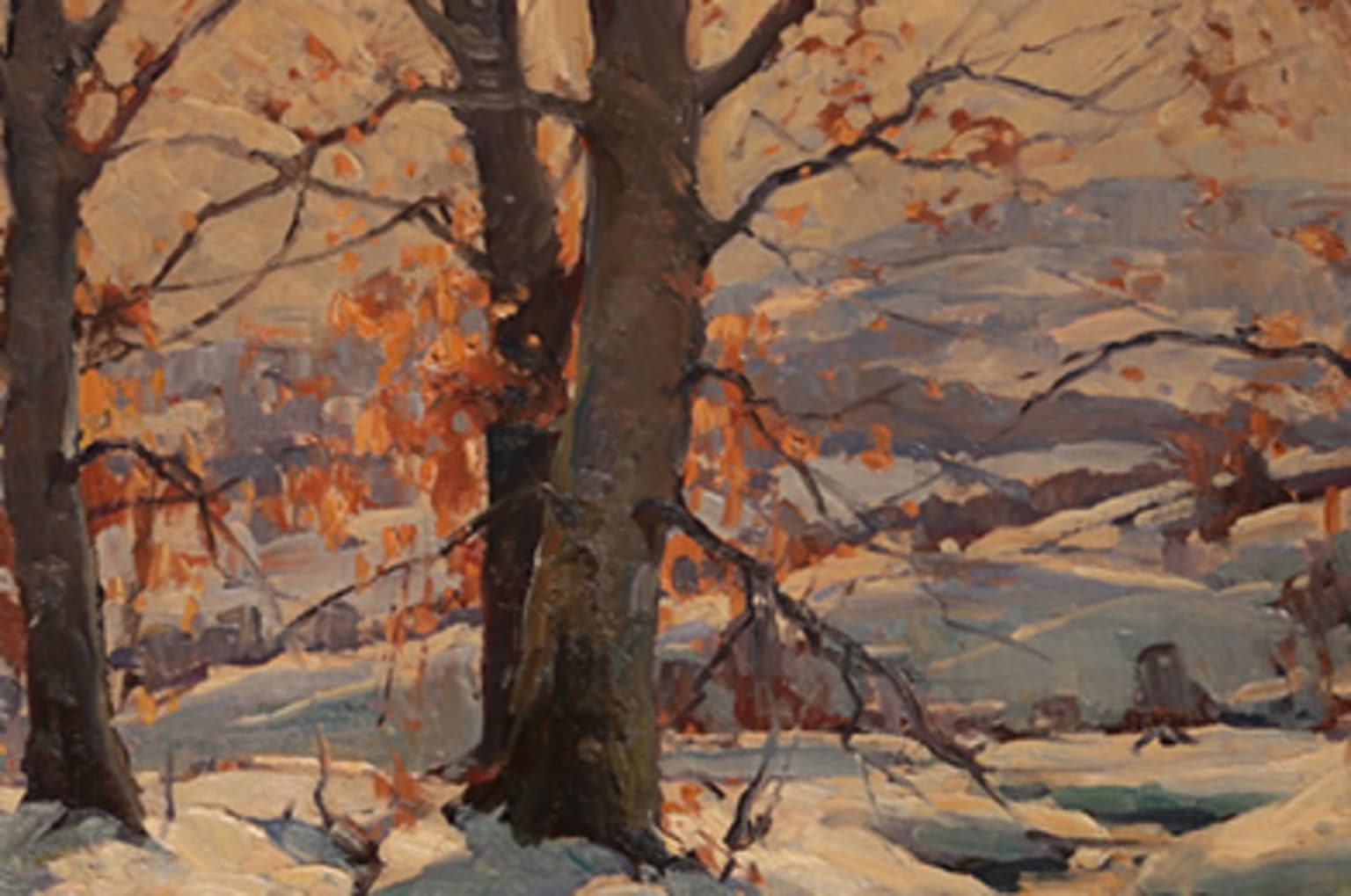
Can a painting be shipped to me?
Bedford Fine Art Gallery does not provide in-house packaging and shipping; however, we know our customers can rely on a local Bedford specialized packaging and shipping associate. Our customers are serviced exclusively by the owner. Her packaging and shipping services are outstanding. Packaging is customized according to the specific fine art painting, with specialized wrapping, boxing and cushioning materials being used. If requested, MasterPak® shipping boxes for framed artwork can be utilized. These provide three layers of foam protection that snugly encases the artwork, all within a strong corrugated container that offers plywood strength without the weight, cost, and shipping expense. The cost of shipping is the responsibility of the buyer.
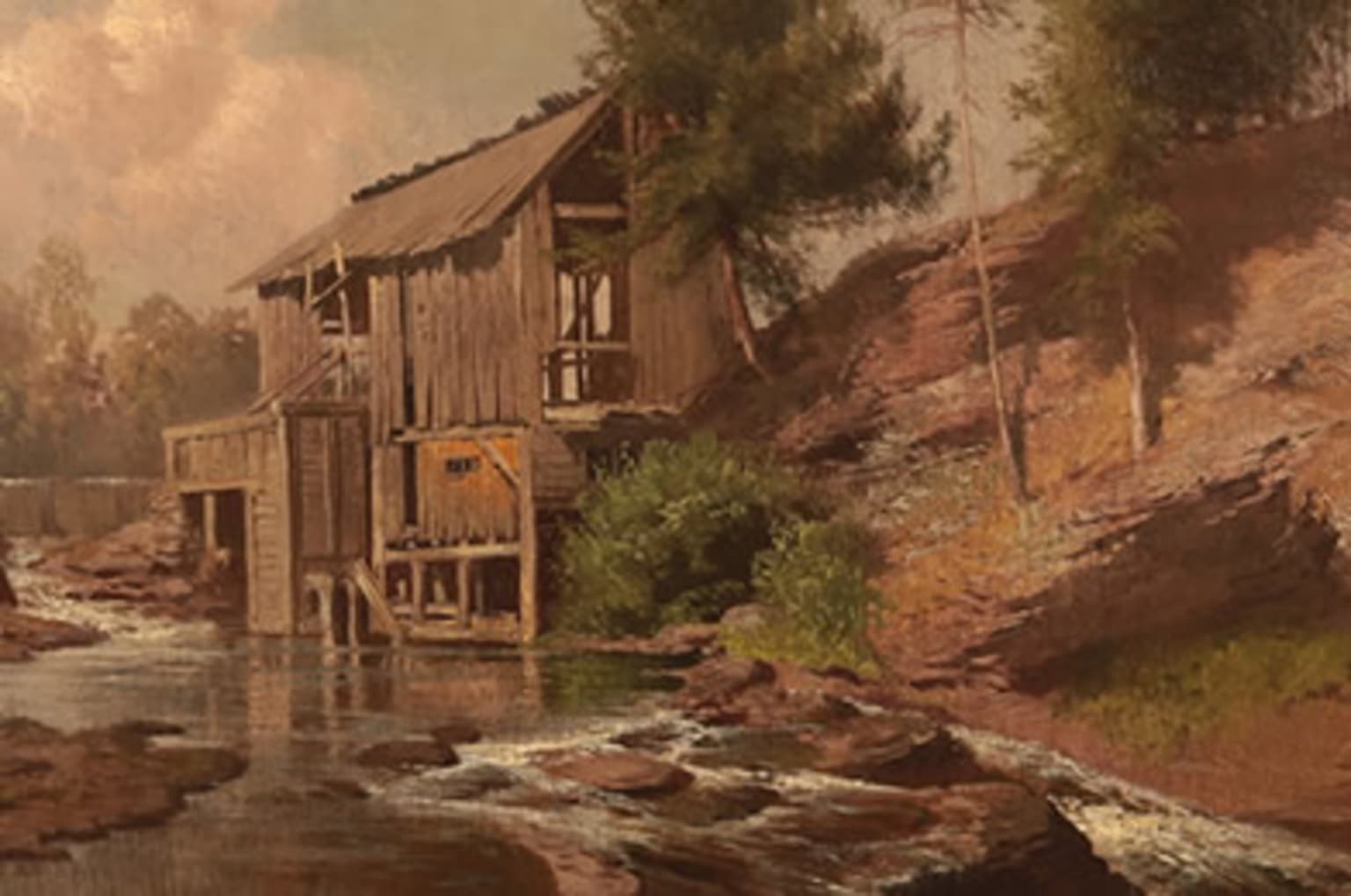
How is the value of a painting determined?
"Nowadays people know the price of everything and the value of nothing." – Oscar
Wilde
Today the term "fine art" encompasses many types of art movements, including modernism. When
viewing modern abstract art, you typically just see colors and shapes. These so-called works of
art are built more upon the contemporary artist’s brand and less upon their talent as an artist.
We have all seen the articles where these so-called pieces of modern art have sold for millions
of dollars. Unlike
modern art, when a quality 19th century fine art painting is hanging on your wall,
you do not need to try to explain what it is you are seeing. People intuitively know that
the work of a very talented 19th century artist captured true beauty and the painting is not
some modern fad hung for shock value or another emotional response, not aligned with
beauty.
An original piece of fine art tends to be considered more of a luxury item purchase using
discretionary funds. Fine art is typically not your average commodity, such as a new
automobile, big screen TV, or basic necessities such as food and shelter. Fine art is
subjective and the value of fine art is also, therefore, totally subjective. People who love
19th century fine art know that this style of art brings true beauty to the décor within
their home. Fine art, however, is not for everyone and some folks view a purchase of fine
art as unnecessary or frivolous.
An article published at the end of 2017 states that the fine art market has grown 113% in 10
years. For every article such as this, however, there are an equal number of articles that
discuss the cyclical nature of the fine art market. Like most luxury items, fine art tends
to sell well in good economic times and poorly in times of an economic downturn. It is
unfortunate, but there are folks who view fine art strictly as an investment vehicle. In our
opinion, these people would be better off to speculate on the stock market or flip a house
for a short-term return on their investment. In summary, buying fine art is primarily an
aesthetic investment and not purely a financial investment.
The price of an item is typically considered when purchasing a needed commodity. For
example, when comparison shopping on the internet, you can view thousands of mass produced
items that are identical, except for their price. Fine art is unlike standard commodities,
where one brand can typically be substituted for another. Rare one-of-a-kind original 19th
century paintings are by definition irreplaceable and they are, therefore, valued
accordingly. People don’t purchase fine art because they have to buy it for a day-to-day
necessity; they buy fine art because they want to buy it. Customers buy a particular 19th
century painting from Bedford Fine Art Gallery because they love it. A connection is made
and our customers bond with the artist and the painting. Our customers love many aspects of
the particular unique original 19th century painting they select, such as: the composition,
the artist’s palette of color, its quality, its style, the craftsmanship, the artist’s
history/talent, etc. Every painting has a story and they love to share this with friends and
family.
Unfortunately, in today’s fine art market, a certified appraisal of a piece of fine art may
not be worth the paper it is written on. This is not because certified appraisers are not
professional or ethical, but it is instead due to the high volatility in what paintings are
sold for at auction houses (where the appraisers typically review data to determine the fair
market value of a particular piece of fine art). As an example, a specific painting had an
estimated price of $2,000 to $3,000 at a May 6, 2017 auction. The painting failed to sell at
that auction. The same painting was then estimated at $1,000 to $1,500 for a November 11,
2017 sale at the same auction house. This time, six months later, the same painting at the
same auction house was sold for $5,940. Another painting by this same artist was estimated
at $10,000 to $15,000 at a different auction house for a April 18, 2018 sale. The painting
exceeded the expert’s estimate, of between $10,000 to $15,000, and sold for
$37,500.
The bottom-line is that, in a somewhat unpredictable fine art market, we are honored our
customers trust the value we place on each of our paintings, knowing that we are honest,
fair and reasonable. Bedford Fine Art Gallery is unlike any other gallery or auction house.
Whether it is a visit to our website, their first phone call to us, or a visit to our
gallery, customers immediately sense our passion for 19th century fine art. Unlike other
galleries and auction houses, selling fine art is not our primary or only job. We are both
full-time geologists and our gallery is a direct off-shoot of our love of fine art for the
past 30 years. We do not have the overhead that almost all galleries and auction houses
have, because we own our building (which is our 1889 Victorian home in historic Bedford,
PA!), we own almost all of the fine art we sell (i.e. we only have a few pieces on
consignment), and we do not have any employees. This coupled with the fact that we sell only
the highest quality paintings from well listed artists, ensures that our customers get the
best value. Finally, it is important to mention that, although we have no control over the
overall fine art market, we give all our customers a trade-in promise that guarantees the
value of the original fine art they purchase from Bedford Fine Art Gallery will never
decrease in value.
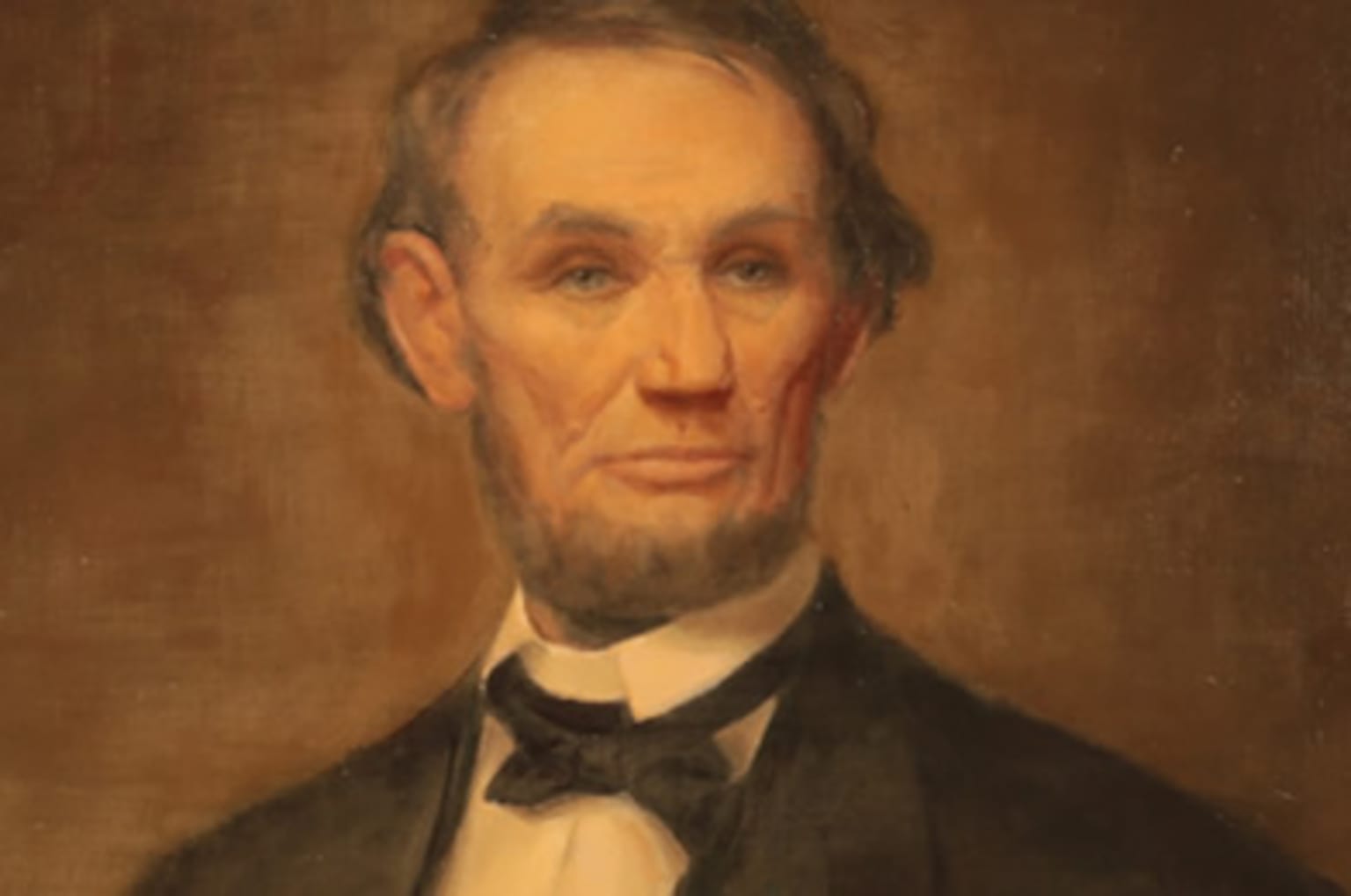
What guarantees do you give me on a painting I purchase?
When you purchase a painting from us, you get our guarantee that it is an authentic 19th century painting by the artist whose signature appears on the canvas. We also offer a trade-in guarantee on the painting you purchase. If, after having enjoyed the painting for a time, you decide you would like something else instead, simply return the painting to us. If the painting has not been damaged while in your care, we will apply its original purchase price toward the purchase price of another painting of higher value.
We will undoubtedly visit again to see the art in this remarkable gallery. We brought home a watercolor and have the confidence we were dealt with openly and fairly.
William and Susan L.Jerry & Joan - Thanks for your hospitality and helping us find this beautiful new piece for our home. Until next time...
Adrienne & Jon W.Thank you again so much for the information, Jerry.
Allison G.This sounds perfect. I am really happy that after being in the family for a hundred years, they will be in good hands at your gallery. I was very impressed by your website and your dedication to and appreciation for fine art.
Antonia S.Such a lovely experience with Knowledgeable people passionate about art.
Beth Anne J.Thank you for including me on your mailing list. Every time I see Bedford Fine Art Gallery in my mail I know I am in for a treat.
Beth L.Let’s face it, paintings are expensive, and it can be a traumatic experience buying them. Jerry and Joan do as much as any vendor possibly could do to make the experience relaxed, warm, and joyful. We came away with a high level of trust and satisfaction, knowing that we got a square deal on some wonderful paintings and knowing that Jerry and Joan provide great customer support.
Beth and SamCouldn’t have been a better or easier transaction! Again, many thanks.
Betty D.When I first saw the painting, it reminded me of a time gone by, when life was so much more simple, where everyone was less in a rush, a time when everyone knew everyone, a time where people actually cared for their fellow man.
Bill B.It is a joy to have in our collection, and we will take good care of it, for the rest of our lives.
Bob L.We were so happy with Joan and Jerry’s customer service and expertise. I would recommend Bedford Fine Art Gallery to anyone that is looking for the special piece of art. You will be happy you reached out to them.
Bob and Christine M.Discovering Bedford Fine Art Gallery and working with Jerry and Joan to purchase our first picture from them has been a smooth and joyful experience — and we haven’t even met in person yet.
Bob and Theresa L.I drove 12 hours to meet the nicest couple and outstanding artwork that was perfectly and honestly represented. More than pleased with expertise, professionalism, and kindness genuinely exhibited by Jerry and Joan.
Brent & Sarah S.Thanks for making my purchase so easy.
Brian C.It was truly a pleasure dealing with you and the Bedford Fine Art Gallery.
Brian C.Greetings! Thank you for your periodic emails. They are always welcomed.
CNLove your posts…thanks!
CarrollA truly incredible website. Really! I was "detained" there for almost two hours and have returned periodically. Pictures are worth thousands of words, literally. Any reader who heeds our advice and visits the site will be happy to confirm our praise. We encourage all to visit and get to know Joan and Jerry. Most knowledgeable, friendly, accommodating, and a pleasure to deal with.
Carroll and Carolyn K.Joan and Jerry Hawk’s Bedford Fine Art Gallery, located in the historic Bedford Mansion, near the Bedford Courthouse, offers an extensive collection of original 19th century paintings in their beautifully restored gallery...which continually attracts this appreciative collector and former museum trustee.
Charles F.I would highly recommend this Gallery for art.
Christopher C.In this age of internet shopping, few can pull off personalized and professional customer service, but Bedford Fine Art Gallery has perfected it!
Christopher K.Furthermore after discussing its acquisition with Joan not only did I find the entire process most pleasant but Joan agreed to deliver the painting the very next day which was in fact my birthday. I find this sort of old-fashioned business courtesy so rare these days. What a pleasure to do business with people like this! I wholeheartedly recommend art purchases from this company! They are simply the best!
D. H.Jerry - The painting just came alive. Please know how grateful I am.
D.G.S.Jerry, - Thank you and Joan for our visit Friday. You two make me smile.
D.S.Magnificent. Your love for your art collection is displayed in your gallery.
Dave N.I was very pleased with the way the communication between Gerald Hawk and myself was handled. Very prompt and efficient. I would recommend the Bedford Fine Art Gallery to anyone interested in their beautiful artwork.
Debra B.I am enjoying my artists work and their position in my Mechanicsburg home, as well as Williamsburg.
Doris B.Jerry & Joan offered the work fully restored and framed so it was ready to hang. They were easy to deal with which went a long way since I was buying from outside the US.
Ed H.A visit to the Bedford Fine Arts Gallery is a rare opportunity to see American nineteenth landscape, portrait, and still life paintings in a house-turned-gallery of the same era, in a region close to where some of the artists, such as The Scalp Level School, painted.
Ellen C.We have counted on the Hawks over the years to regularly discover incredible items whose quality and condition have ameliorated the artistic environment of our homes.
Frank B.Thanks again for the opportunity to own the work of an artist who is very important to us. We are extremely happy with this experience. Take care.
Franklin J.My introduction to Gerald Hawk came through an initial phone call. Not only was he knowledgeable of fine art and well connected with the collecting community, he was passionate for his love of art. He treated me with the greatest respect, honesty, and kindness. That was the start of a business relationship that has probably been the most enjoyable I have had the pleasure to experience in my life.
Fred C.Just to let you know the painting arrived in perfect condition and we are thrilled.
G. & T.Beautifully done - one can tell it is a work of love! The collection was impressive and the viewing of it , a pleasure. Thank you!
Gabrielle G.Proprietors Joan and Jerry Hawk have established a first class art gallery offering the very best in fine art, professionally arranged displays, state-of-the-art technology, and superior customer service.
Gary G.Thanks for the quick reply etc. Not what usually comes from those Big Auction House Players .. and NYC galleries. So it’s refreshing to experience the response.
Geoffrey H.I recommend BFAG to both the serious art collector and to the one who desires to cultivate a love for fine art. The Hawks are knowledgeable and accommodating, and their love for fine art goes far beyond making a sale.
Gus S.Absolutely stunning art!
Irene and Peter E.Very pleased. Don't hesitate to contact me when you get something in that you think fits my collection.
J.M.The more I look at Rose Point the more I like it.
James M.The new paintings are hung and look great, thanks for delivering.
Janet S.I am so happy with my completed “gallery wall” and wanted to thank you for all your help in putting it together.
Janet and George S.Jerry and Joan are simply amazing. Their knowledge and passion are second to none. Not only is the collection at Bedford Fine Art Gallery of museum quality, but their passion really inspires you, comforts you, and welcomes you in as a member of what seems like an exclusive club. We are blessed to know them.
Jason and Alyson L.The Bedford Fine Art Gallery was recommended to us by our neighbors. They were very impressed both by the wonderful artwork presented and the very amiable owners. So, one rainy day, we stopped in to see for ourselves. We are so glad we did! It was immediately evident that, for Jerry and Joan, the gallery was not a business but a passion.
Jeff and Cathy D.It’s not every day you meet people so kind, professional and passionate about what they do. Every detail was taken care of from the excellent online listing to perfectly handled packing and shipping once we completed the purchase.
Jeff and Lisa G.From the front door, you can tell you are going to have a very interesting, pleasant and peaceful experience. The art is wonderful. The owners have so much knowledge and the patience to share it.
Jeff and Sara K.My testimonial for my purchase of the C. H. Shearer painting is a five star one!
Jeffrey F.Our impulsive stop while strolling through town turned into a several-hour visit and, ultimately, resulted in the purchase of a unique painting that we could not resist. The Bedford Fine Art Gallery is a destination must that we highly recommend for anyone who appreciates classic American art and superior service.
Jennifer T.We really appreciate the time you took to research the history of the roses.
Jim C.Jerry and Joan are terrific to work with. They have a wonderful selection in their gallery, and they take time to learn your interests to aide in the selection of a great piece of art.
Jim K.It was a pleasure working with Jerry and Joan at Bedford Fine Art Gallery.
Jocelyn D.Awesome place. Thank you for your hospitality.
Joe and Zoey K.Jerry and Joan Hawk have an extensive knowledge of the artists, backgrounds, and artwork in their gallery that they love to share with guests . The time invested in the Bedford Fine Arts Gallery will be one of your most pleasant memories of the year.
John B.A gem in the middle of Pennsylvania.
John and Kathy D.Beautiful and wonderfully displayed paintings.
John and Paula L.Hi Jerry, the painting arrived today and I think it is a beautiful and I’m very appreciative and thankful to have it.
JonSince the first time I visited the Bedford Fine Art Gallery it has been a great experience. The owners are warm, humble, and true professionals with amazing expertise to guide new collectors in finding the right piece that speaks to them. The knowledge and passion they share is so refreshing and made the entire process, from browsing to the final decision, so exciting and a true pleasure
Josh B.Extremely knowledgeable staff and wide selection of high end paintings by listed artists.
Joshua J.It was such a pleasure to purchase artwork from Jerry. He is an honest man, who goes the extra mile (literally – he actually delivered a painting to me, over 6 hour drive one way!) to make sure the painting arrived safely.
Julie A.Jerry was of great help by purchasing a painting that had been in my family for over sixty years.
Kenneth L.Packed with fine art like visiting an art museum
KevinHello Jerry, I love it. Just what I had been wanting.
Kevin V.Very informative, welcoming, absolutely gorgeous art. Thank you so much for the experience!
Kit T.Hi Jerry and thanks for your quick response!!!!!
KkThank you very, very much for your response and expertise.
LVMany thanks to you for your care and context in telling me more about the artist and the market!
Laura W.We were especially appreciative of your patience with us and your knowledge of the art.
Lee S.Dear Jerry, Thank you for so generously taking your time to research my painting.
Linda R.I just wanted to check in to see how you are to tell you that I was reminded yesterday of what an awesome business you guys have going. I went to one of the other galleries that has some of my artwork, and the person that I was dealing with no longer works there. Everything was mass chaos, and they can’t find one of my paintings! Jeff and I already knew that we found a gem when we found your gallery but then we got to spend time with you in December and it was doubly confirmed! Thank you again for letting us be a part of your beautiful Gallery.
Lisa G.Jerry: Got the paintings—they look fabulous.
M.M.If I could give more than 5 starts to Bedford Fine Art Gallery, I would. Dealing with Jerry Hawk was timely, efficient and productive. His terms made it possible for me to buy it, and he collaborated with a local shipping outfit to pack and send the painting as well. (It was beautifully and securely packed.) I recommend Bedford Fine Art Gallery without reservation!
M.P.Jerry and Joan were honest and straightforward with me. Also, they made the sale easy and fair.
Margaret H.The entire transaction was very smooth and I had excellent communication the entire time.
Margaret R.On a recent trip to Bedford we visited the Fine Art Gallery and were impressed by the quality of the paintings displayed and by the discussions we had with Jerry. We purchased a painting and we expect to revisit the Gallery on our next trip to Bedford.
Marguerite and BobI am thrilled with my purchase and cannot thank the Hawk’s enough for their exceptional customer service, and knowledge of the artist's paintings they carry in their gallery.
Marian B.The owners, Joan and Jerry Hawk, were very knowledgeable about each work of art in the Gallery and the art market in general. We found them to be very honest and sincere and never pushy about making a sale despite our interest in several pieces. A few weeks later we decided to purchase an oil painting from them. The overall transaction and delivery exceeded our expectations and we love the painting. If you are interested in purchasing a fine work of art from a dealer you can trust, I would highly recommend Joan and Jerry of the Bedford Fine Art Gallery.
Mark B.What a great experience it was to make my first fine art purchase with you. Thank you!
Mark S.We have been very happy with the entire purchase process, from choosing a piece of art to the care Jerry and Joan gave the piece in order for it to look perfect in our home.
Mary and Monty B.Jerry and Joan have a beautiful collection to choose from and provided exceptional customer service.
Melissa and John P.Jerry and Joan have a beautiful collection to choose from and provided exceptional customer service.
Melissa and John P.Thank you for all your assistance with my recent purchase. Both you and your wife were very kind and knowledgeable.
Michael M.When I'm searching for an artist, or a tone and style that I love, I turn to Bedford Fine Art Gallery.
Michael M.I keep coming back to your gallery because I love your paintings.
Michael M.Jerry and Joan Hawk have created a haven for art lovers!
Michal J.We consigned 3 oil paintings with Jerry and Joan Hawk at Bedford Fine Art Gallery.
Mike F.Jerry and Joan made it a smooth and wonderful experience by putting us at ease with their knowledge and gracious manner.
Mike and Karen S.It was such a pleasure to buy our first piece of fine art from you both.
Mike and Kelly C.Thank you for your business with the lovely paintings.
Moira O.We recently consigned several pieces of art to The Bedford Fine Art Gallery. It is hard to part with treasures, but Jerry and Joan were most accommodating in meeting us halfway in West Virginia. We appreciate their professionalism, received prompt payment for the sale of the first art piece and look forward to continued successful transactions.
Pam and Mike F.Jerry and Joan were a constant pleasure to work with. I had been considering purchasing a presidential portrait of theirs for some time, but they never tired of my questions or repeated requests to see the painting. I hope to acquire more 20th and 19th oil paintings in the future.
Patrick N.We are now excited owners of several beautiful paintings and look forward to seeing what new pieces are added to the gallery. Working with Jerry and Joan was a great experience.
Patty and Jim K.You are very honest and a man of your word. Thank you very much Jerry!
R.K.What a pleasant and surprisingly exciting experience, purchasing my painting from the Bedford Fine Art Gallery became.
R.T.From the first call through receipt of the expertly packaged artwork, the Bedford Fine Art Gallery excels!
Randy B.If you are able to visit the gallery I would suggest giving a few hours to enjoy the artwork. One more tip.... if your satisfied how the paintings look online, they are much better in person. I know I'll be back in Bedford soon to purchase another!
Randy Scott F.I would recommend this hidden gem!
Rhetta G.Jerry, thank you for overlooking my stubbornness and indecisiveness.
Rich C.They provided a simple and seamless transaction.
Richard and Cassie F.Ken came and delivered the art. Everything is beautiful.
Rick M.I would like to give a personal recommendation from my first-hand experience with the Bedford Fine Art Gallery during February and March of 2024.
Rob K.Jerry Hawk's passion and knowledge really shine in Bedford Fine Art Gallery's excellent collection of 19th century art. I heartily recommend Jerry and his gallery.
Rob S.We love the new paintings and are so glad to know you and your amazing gallery.
Robert L.The painting is exactly what I have been looking for.
Robert M.Truly, you are the "The Most Honest Art Gallery in the United States.
Robert M.It was a delight to have several hours with some very interesting and helpful people.
Roger and Joy G.Joan made us extremely welcome on that first visit and we were very taken with the work of two artists. We returned the next day and enjoyed a relaxed opportunity to study the pictures again before we committed to purchase. Both Joan and Jerry were very knowledgeable and helpful but also allowed us some privacy to discuss the pictures ourselves. Once we committed to purchase they went "the extra mile" to help overcome obvious hurdles of packing for international shipping and the customs arrangements.
Russell & Liz C.Joan and Jerry are extraordinary to work with for the purchase of our painting. They are extremely knowledgeable about the painting and have been helpful finding historical information about the Artist himself. Our beautiful painting hangs proudly where all can see and enjoy it.
Ryan M.If you are considering a wall art purchase to decorate your home, we would highly recommend contacting The Fine Art Gallery. We look forward to seeing what new pieces will be added in the newly expanded lower level of the gallery.
Ryan and TriciaThey were both very knowledgeable and truly care about each and every piece that they own. Ultimately, I was able to take home my very first John Joseph Enneking piece, Woodland Whitewater, and I could not be happier with both the piece and my entire experience at Bedford Fine Art gallery.
Sam H.This wonderful gallery is often noted to be on par with a 19th century art museum or salon and is not to be missed, including meeting its’ purveyors of art, Joan and Jerry Hawk. Their discerning eye, thorough research, and care in selecting and presenting the best representative art of the period is most impressive.
Sarah H.Upon meeting both Jerry and Joan I knew I made the right decision. They are very passionate about art work and quite knowledgeable on the life and history of the artist. It was a pleasure doing business with them and I would highly recommend the Bedford Fine Art Gallery if you are looking for fairness, honesty and a genuine comfort level in either selling or purchasing fine art.
Scott & BarbetteVisiting with no intention of buying, we were treated to in depth information on each artist and piece that caught our attention. We untimately purchased two pieces that touched us. Art speaks to everyone differently and it is nice to have gallery owners who appreciate that.
Sheila and FrankWe recently purchased a beautiful original oil painting from Bedford Fine Art Gallery. We live in Virginia, and because of Covid 19 and our age, we hesitated on traveling to PA to view this painting. Jerry and Joan were very accommodating. We highly recommend Bedford Fine Art Gallery, if you're in the market for some quality art work.
Sonny and Carolyn B.I bought three gorgeous paintings from this gallery and the owners are simply the best.
Stefanie L.What an incredible experience as I was on the search for a still life by BS Hays. Bedford Fine Art Gallery offers a beautiful, historical environment with a personalized service, guiding you through lovely art offerings.
Susan M.I am so happy to have worked with the Bedford Art Gallery; the people were pleasant and knowledgeable. Their collection is beautiful.
Suzanne F.I also wanted to thank you for your detailed response.
Suzanne S.We are enjoying the painting. Happy holidays to you.
TeddyThe breadth and depth of Jerry's knowledge of art is very impressive. What I especially appreciated was his down to earth manner and his willingness to know his customers.
Theodora BYou are wonderful Jerry! Thank you so much. I'm glad I connected with you. You certainly know your industry! I appreciate all of your help.
Tim B.Thank you- you are very kind.
Tim S.We found Bedford Fine Art Gallery about a year ago. Most impressive was the level of customer service they bring to the table. They went out of their way to be as helpful and accommodating as possible. We bought a wonderful painting we love.
Tim and Mary H.In sum, Bedford Fine Art Gallery is an exceptional art gallery which fosters meaningful relationships based on mutual respect, trust, and an appreciation for the field of art history. I highly recommend Bedford Fine Art Gallery and I look forward to forging a lasting relationship with Jerry and Joan for years to come.
Tyler M.Personalized, smart, customer service designed to assist you in choosing the finest 19th century paintings anywhere—whether you know your style & you’re adding to it, buying investment art, or like me—walking in and being starstruck by a piece that calls to me with no rhyme or reason but must come home with me.
Tyna L.Gerry was amazing to work with. Called him totally out of the blue, to sell a painting from my mom’s estate. Promptness is an understatement.
Uri S.Buying a favourite picture and talking with owners was a wonderful experience. Looking forward to seeing what they post for sale in the future.
V.B.Thank you so so much.
Valerie K.Combining knowledge and passion with their friendly home spun appreciation for their clients, the Hawks are the most delightful respite from the usual gallery sales approach.
Vivian and Bennett L.I really enjoyed the art, but the house, decore and overall experience was also very enjoyable
William K.Just arrived. Looks great. Thank you.
William M.We will undoubtedly visit again to see the art in this remarkable gallery. We brought home a watercolor and have the confidence we were dealt with openly and fairly.
William and Susan L.Jerry & Joan - Thanks for your hospitality and helping us find this beautiful new piece for our home. Until next time...
Adrienne & Jon W.Thank you again so much for the information, Jerry.
Allison G.This sounds perfect. I am really happy that after being in the family for a hundred years, they will be in good hands at your gallery. I was very impressed by your website and your dedication to and appreciation for fine art.
Antonia S.Such a lovely experience with Knowledgeable people passionate about art.
Beth Anne J.Thank you for including me on your mailing list. Every time I see Bedford Fine Art Gallery in my mail I know I am in for a treat.
Beth L.Let’s face it, paintings are expensive, and it can be a traumatic experience buying them. Jerry and Joan do as much as any vendor possibly could do to make the experience relaxed, warm, and joyful. We came away with a high level of trust and satisfaction, knowing that we got a square deal on some wonderful paintings and knowing that Jerry and Joan provide great customer support.
Beth and SamCouldn’t have been a better or easier transaction! Again, many thanks.
Betty D.When I first saw the painting, it reminded me of a time gone by, when life was so much more simple, where everyone was less in a rush, a time when everyone knew everyone, a time where people actually cared for their fellow man.
Bill B.It is a joy to have in our collection, and we will take good care of it, for the rest of our lives.
Bob L.We were so happy with Joan and Jerry’s customer service and expertise. I would recommend Bedford Fine Art Gallery to anyone that is looking for the special piece of art. You will be happy you reached out to them.
Bob and Christine M.Discovering Bedford Fine Art Gallery and working with Jerry and Joan to purchase our first picture from them has been a smooth and joyful experience — and we haven’t even met in person yet.
Bob and Theresa L.I drove 12 hours to meet the nicest couple and outstanding artwork that was perfectly and honestly represented. More than pleased with expertise, professionalism, and kindness genuinely exhibited by Jerry and Joan.
Brent & Sarah S.Thanks for making my purchase so easy.
Brian C.It was truly a pleasure dealing with you and the Bedford Fine Art Gallery.
Brian C.Greetings! Thank you for your periodic emails. They are always welcomed.
CNLove your posts…thanks!
CarrollA truly incredible website. Really! I was "detained" there for almost two hours and have returned periodically. Pictures are worth thousands of words, literally. Any reader who heeds our advice and visits the site will be happy to confirm our praise. We encourage all to visit and get to know Joan and Jerry. Most knowledgeable, friendly, accommodating, and a pleasure to deal with.
Carroll and Carolyn K.Joan and Jerry Hawk’s Bedford Fine Art Gallery, located in the historic Bedford Mansion, near the Bedford Courthouse, offers an extensive collection of original 19th century paintings in their beautifully restored gallery...which continually attracts this appreciative collector and former museum trustee.
Charles F.I would highly recommend this Gallery for art.
Christopher C.In this age of internet shopping, few can pull off personalized and professional customer service, but Bedford Fine Art Gallery has perfected it!
Christopher K.Furthermore after discussing its acquisition with Joan not only did I find the entire process most pleasant but Joan agreed to deliver the painting the very next day which was in fact my birthday. I find this sort of old-fashioned business courtesy so rare these days. What a pleasure to do business with people like this! I wholeheartedly recommend art purchases from this company! They are simply the best!
D. H.Jerry - The painting just came alive. Please know how grateful I am.
D.G.S.Jerry, - Thank you and Joan for our visit Friday. You two make me smile.
D.S.Magnificent. Your love for your art collection is displayed in your gallery.
Dave N.I was very pleased with the way the communication between Gerald Hawk and myself was handled. Very prompt and efficient. I would recommend the Bedford Fine Art Gallery to anyone interested in their beautiful artwork.
Debra B.I am enjoying my artists work and their position in my Mechanicsburg home, as well as Williamsburg.
Doris B.Jerry & Joan offered the work fully restored and framed so it was ready to hang. They were easy to deal with which went a long way since I was buying from outside the US.
Ed H.A visit to the Bedford Fine Arts Gallery is a rare opportunity to see American nineteenth landscape, portrait, and still life paintings in a house-turned-gallery of the same era, in a region close to where some of the artists, such as The Scalp Level School, painted.
Ellen C.We have counted on the Hawks over the years to regularly discover incredible items whose quality and condition have ameliorated the artistic environment of our homes.
Frank B.Thanks again for the opportunity to own the work of an artist who is very important to us. We are extremely happy with this experience. Take care.
Franklin J.My introduction to Gerald Hawk came through an initial phone call. Not only was he knowledgeable of fine art and well connected with the collecting community, he was passionate for his love of art. He treated me with the greatest respect, honesty, and kindness. That was the start of a business relationship that has probably been the most enjoyable I have had the pleasure to experience in my life.
Fred C.Just to let you know the painting arrived in perfect condition and we are thrilled.
G. & T.Beautifully done - one can tell it is a work of love! The collection was impressive and the viewing of it , a pleasure. Thank you!
Gabrielle G.Proprietors Joan and Jerry Hawk have established a first class art gallery offering the very best in fine art, professionally arranged displays, state-of-the-art technology, and superior customer service.
Gary G.Thanks for the quick reply etc. Not what usually comes from those Big Auction House Players .. and NYC galleries. So it’s refreshing to experience the response.
Geoffrey H.I recommend BFAG to both the serious art collector and to the one who desires to cultivate a love for fine art. The Hawks are knowledgeable and accommodating, and their love for fine art goes far beyond making a sale.
Gus S.Absolutely stunning art!
Irene and Peter E.Very pleased. Don't hesitate to contact me when you get something in that you think fits my collection.
J.M.The more I look at Rose Point the more I like it.
James M.The new paintings are hung and look great, thanks for delivering.
Janet S.I am so happy with my completed “gallery wall” and wanted to thank you for all your help in putting it together.
Janet and George S.Jerry and Joan are simply amazing. Their knowledge and passion are second to none. Not only is the collection at Bedford Fine Art Gallery of museum quality, but their passion really inspires you, comforts you, and welcomes you in as a member of what seems like an exclusive club. We are blessed to know them.
Jason and Alyson L.The Bedford Fine Art Gallery was recommended to us by our neighbors. They were very impressed both by the wonderful artwork presented and the very amiable owners. So, one rainy day, we stopped in to see for ourselves. We are so glad we did! It was immediately evident that, for Jerry and Joan, the gallery was not a business but a passion.
Jeff and Cathy D.It’s not every day you meet people so kind, professional and passionate about what they do. Every detail was taken care of from the excellent online listing to perfectly handled packing and shipping once we completed the purchase.
Jeff and Lisa G.From the front door, you can tell you are going to have a very interesting, pleasant and peaceful experience. The art is wonderful. The owners have so much knowledge and the patience to share it.
Jeff and Sara K.My testimonial for my purchase of the C. H. Shearer painting is a five star one!
Jeffrey F.Our impulsive stop while strolling through town turned into a several-hour visit and, ultimately, resulted in the purchase of a unique painting that we could not resist. The Bedford Fine Art Gallery is a destination must that we highly recommend for anyone who appreciates classic American art and superior service.
Jennifer T.We really appreciate the time you took to research the history of the roses.
Jim C.Jerry and Joan are terrific to work with. They have a wonderful selection in their gallery, and they take time to learn your interests to aide in the selection of a great piece of art.
Jim K.It was a pleasure working with Jerry and Joan at Bedford Fine Art Gallery.
Jocelyn D.Awesome place. Thank you for your hospitality.
Joe and Zoey K.Jerry and Joan Hawk have an extensive knowledge of the artists, backgrounds, and artwork in their gallery that they love to share with guests . The time invested in the Bedford Fine Arts Gallery will be one of your most pleasant memories of the year.
John B.A gem in the middle of Pennsylvania.
John and Kathy D.Beautiful and wonderfully displayed paintings.
John and Paula L.Hi Jerry, the painting arrived today and I think it is a beautiful and I’m very appreciative and thankful to have it.
JonSince the first time I visited the Bedford Fine Art Gallery it has been a great experience. The owners are warm, humble, and true professionals with amazing expertise to guide new collectors in finding the right piece that speaks to them. The knowledge and passion they share is so refreshing and made the entire process, from browsing to the final decision, so exciting and a true pleasure
Josh B.Extremely knowledgeable staff and wide selection of high end paintings by listed artists.
Joshua J.It was such a pleasure to purchase artwork from Jerry. He is an honest man, who goes the extra mile (literally – he actually delivered a painting to me, over 6 hour drive one way!) to make sure the painting arrived safely.
Julie A.Jerry was of great help by purchasing a painting that had been in my family for over sixty years.
Kenneth L.Packed with fine art like visiting an art museum
KevinHello Jerry, I love it. Just what I had been wanting.
Kevin V.Very informative, welcoming, absolutely gorgeous art. Thank you so much for the experience!
Kit T.Hi Jerry and thanks for your quick response!!!!!
KkThank you very, very much for your response and expertise.
LVMany thanks to you for your care and context in telling me more about the artist and the market!
Laura W.We were especially appreciative of your patience with us and your knowledge of the art.
Lee S.Dear Jerry, Thank you for so generously taking your time to research my painting.
Linda R.I just wanted to check in to see how you are to tell you that I was reminded yesterday of what an awesome business you guys have going. I went to one of the other galleries that has some of my artwork, and the person that I was dealing with no longer works there. Everything was mass chaos, and they can’t find one of my paintings! Jeff and I already knew that we found a gem when we found your gallery but then we got to spend time with you in December and it was doubly confirmed! Thank you again for letting us be a part of your beautiful Gallery.
Lisa G.Jerry: Got the paintings—they look fabulous.
M.M.If I could give more than 5 starts to Bedford Fine Art Gallery, I would. Dealing with Jerry Hawk was timely, efficient and productive. His terms made it possible for me to buy it, and he collaborated with a local shipping outfit to pack and send the painting as well. (It was beautifully and securely packed.) I recommend Bedford Fine Art Gallery without reservation!
M.P.Jerry and Joan were honest and straightforward with me. Also, they made the sale easy and fair.
Margaret H.The entire transaction was very smooth and I had excellent communication the entire time.
Margaret R.On a recent trip to Bedford we visited the Fine Art Gallery and were impressed by the quality of the paintings displayed and by the discussions we had with Jerry. We purchased a painting and we expect to revisit the Gallery on our next trip to Bedford.
Marguerite and BobI am thrilled with my purchase and cannot thank the Hawk’s enough for their exceptional customer service, and knowledge of the artist's paintings they carry in their gallery.
Marian B.The owners, Joan and Jerry Hawk, were very knowledgeable about each work of art in the Gallery and the art market in general. We found them to be very honest and sincere and never pushy about making a sale despite our interest in several pieces. A few weeks later we decided to purchase an oil painting from them. The overall transaction and delivery exceeded our expectations and we love the painting. If you are interested in purchasing a fine work of art from a dealer you can trust, I would highly recommend Joan and Jerry of the Bedford Fine Art Gallery.
Mark B.What a great experience it was to make my first fine art purchase with you. Thank you!
Mark S.We have been very happy with the entire purchase process, from choosing a piece of art to the care Jerry and Joan gave the piece in order for it to look perfect in our home.
Mary and Monty B.Jerry and Joan have a beautiful collection to choose from and provided exceptional customer service.
Melissa and John P.Jerry and Joan have a beautiful collection to choose from and provided exceptional customer service.
Melissa and John P.Thank you for all your assistance with my recent purchase. Both you and your wife were very kind and knowledgeable.
Michael M.When I'm searching for an artist, or a tone and style that I love, I turn to Bedford Fine Art Gallery.
Michael M.I keep coming back to your gallery because I love your paintings.
Michael M.Jerry and Joan Hawk have created a haven for art lovers!
Michal J.We consigned 3 oil paintings with Jerry and Joan Hawk at Bedford Fine Art Gallery.
Mike F.Jerry and Joan made it a smooth and wonderful experience by putting us at ease with their knowledge and gracious manner.
Mike and Karen S.It was such a pleasure to buy our first piece of fine art from you both.
Mike and Kelly C.Thank you for your business with the lovely paintings.
Moira O.We recently consigned several pieces of art to The Bedford Fine Art Gallery. It is hard to part with treasures, but Jerry and Joan were most accommodating in meeting us halfway in West Virginia. We appreciate their professionalism, received prompt payment for the sale of the first art piece and look forward to continued successful transactions.
Pam and Mike F.Jerry and Joan were a constant pleasure to work with. I had been considering purchasing a presidential portrait of theirs for some time, but they never tired of my questions or repeated requests to see the painting. I hope to acquire more 20th and 19th oil paintings in the future.
Patrick N.We are now excited owners of several beautiful paintings and look forward to seeing what new pieces are added to the gallery. Working with Jerry and Joan was a great experience.
Patty and Jim K.You are very honest and a man of your word. Thank you very much Jerry!
R.K.What a pleasant and surprisingly exciting experience, purchasing my painting from the Bedford Fine Art Gallery became.
R.T.From the first call through receipt of the expertly packaged artwork, the Bedford Fine Art Gallery excels!
Randy B.If you are able to visit the gallery I would suggest giving a few hours to enjoy the artwork. One more tip.... if your satisfied how the paintings look online, they are much better in person. I know I'll be back in Bedford soon to purchase another!
Randy Scott F.I would recommend this hidden gem!
Rhetta G.Jerry, thank you for overlooking my stubbornness and indecisiveness.
Rich C.They provided a simple and seamless transaction.
Richard and Cassie F.Ken came and delivered the art. Everything is beautiful.
Rick M.I would like to give a personal recommendation from my first-hand experience with the Bedford Fine Art Gallery during February and March of 2024.
Rob K.Jerry Hawk's passion and knowledge really shine in Bedford Fine Art Gallery's excellent collection of 19th century art. I heartily recommend Jerry and his gallery.
Rob S.We love the new paintings and are so glad to know you and your amazing gallery.
Robert L.The painting is exactly what I have been looking for.
Robert M.Truly, you are the "The Most Honest Art Gallery in the United States.
Robert M.It was a delight to have several hours with some very interesting and helpful people.
Roger and Joy G.Joan made us extremely welcome on that first visit and we were very taken with the work of two artists. We returned the next day and enjoyed a relaxed opportunity to study the pictures again before we committed to purchase. Both Joan and Jerry were very knowledgeable and helpful but also allowed us some privacy to discuss the pictures ourselves. Once we committed to purchase they went "the extra mile" to help overcome obvious hurdles of packing for international shipping and the customs arrangements.
Russell & Liz C.Joan and Jerry are extraordinary to work with for the purchase of our painting. They are extremely knowledgeable about the painting and have been helpful finding historical information about the Artist himself. Our beautiful painting hangs proudly where all can see and enjoy it.
Ryan M.If you are considering a wall art purchase to decorate your home, we would highly recommend contacting The Fine Art Gallery. We look forward to seeing what new pieces will be added in the newly expanded lower level of the gallery.
Ryan and TriciaThey were both very knowledgeable and truly care about each and every piece that they own. Ultimately, I was able to take home my very first John Joseph Enneking piece, Woodland Whitewater, and I could not be happier with both the piece and my entire experience at Bedford Fine Art gallery.
Sam H.This wonderful gallery is often noted to be on par with a 19th century art museum or salon and is not to be missed, including meeting its’ purveyors of art, Joan and Jerry Hawk. Their discerning eye, thorough research, and care in selecting and presenting the best representative art of the period is most impressive.
Sarah H.Upon meeting both Jerry and Joan I knew I made the right decision. They are very passionate about art work and quite knowledgeable on the life and history of the artist. It was a pleasure doing business with them and I would highly recommend the Bedford Fine Art Gallery if you are looking for fairness, honesty and a genuine comfort level in either selling or purchasing fine art.
Scott & BarbetteVisiting with no intention of buying, we were treated to in depth information on each artist and piece that caught our attention. We untimately purchased two pieces that touched us. Art speaks to everyone differently and it is nice to have gallery owners who appreciate that.
Sheila and FrankWe recently purchased a beautiful original oil painting from Bedford Fine Art Gallery. We live in Virginia, and because of Covid 19 and our age, we hesitated on traveling to PA to view this painting. Jerry and Joan were very accommodating. We highly recommend Bedford Fine Art Gallery, if you're in the market for some quality art work.
Sonny and Carolyn B.I bought three gorgeous paintings from this gallery and the owners are simply the best.
Stefanie L.What an incredible experience as I was on the search for a still life by BS Hays. Bedford Fine Art Gallery offers a beautiful, historical environment with a personalized service, guiding you through lovely art offerings.
Susan M.I am so happy to have worked with the Bedford Art Gallery; the people were pleasant and knowledgeable. Their collection is beautiful.
Suzanne F.I also wanted to thank you for your detailed response.
Suzanne S.We are enjoying the painting. Happy holidays to you.
TeddyThe breadth and depth of Jerry's knowledge of art is very impressive. What I especially appreciated was his down to earth manner and his willingness to know his customers.
Theodora BYou are wonderful Jerry! Thank you so much. I'm glad I connected with you. You certainly know your industry! I appreciate all of your help.
Tim B.Thank you- you are very kind.
Tim S.We found Bedford Fine Art Gallery about a year ago. Most impressive was the level of customer service they bring to the table. They went out of their way to be as helpful and accommodating as possible. We bought a wonderful painting we love.
Tim and Mary H.In sum, Bedford Fine Art Gallery is an exceptional art gallery which fosters meaningful relationships based on mutual respect, trust, and an appreciation for the field of art history. I highly recommend Bedford Fine Art Gallery and I look forward to forging a lasting relationship with Jerry and Joan for years to come.
Tyler M.Personalized, smart, customer service designed to assist you in choosing the finest 19th century paintings anywhere—whether you know your style & you’re adding to it, buying investment art, or like me—walking in and being starstruck by a piece that calls to me with no rhyme or reason but must come home with me.
Tyna L.Gerry was amazing to work with. Called him totally out of the blue, to sell a painting from my mom’s estate. Promptness is an understatement.
Uri S.Buying a favourite picture and talking with owners was a wonderful experience. Looking forward to seeing what they post for sale in the future.
V.B.Thank you so so much.
Valerie K.Combining knowledge and passion with their friendly home spun appreciation for their clients, the Hawks are the most delightful respite from the usual gallery sales approach.
Vivian and Bennett L.I really enjoyed the art, but the house, decore and overall experience was also very enjoyable
William K.Just arrived. Looks great. Thank you.
William M.We will undoubtedly visit again to see the art in this remarkable gallery. We brought home a watercolor and have the confidence we were dealt with openly and fairly.
William and Susan L.
230 South Juliana St.
Bedford PA 15522
Phone: 724-459-0612
All content and photos are copyrighted property of Bedford Fine Art Gallery, 19th century art dealer, Bedford PA and can not be reproduced or copied without consent.
